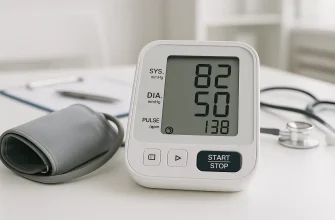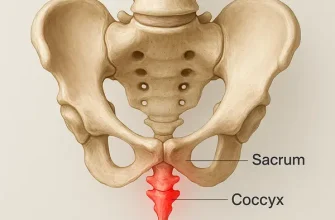Many women experience nausea during pregnancy, especially late in pregnancy, particularly in the 40th week.
How natural is this condition
This is a typical symptom caused by the hormonal shifts in the body. When a woman is pregnant, her body generates higher amounts of estrogen and progesterone, which can result in an unsettled stomach and the feeling of nausea. Additionally, the expanding uterus can exert pressure on the stomach, intensifying the chances of experiencing nausea.
Although feeling sick in the 40th week of pregnancy can be unpleasant, it is a normal occurrence. However, if it is accompanied by severe vomiting or other indications, it is important to consult a healthcare professional. Generally, nausea will lessen after giving birth. It is important to remember that each woman’s pregnancy is different, and some may not encounter nausea at all.
If you are experiencing nausea while pregnant, it is beneficial to stay hydrated, consume small and frequent meals, and avoid things that may make the situation worse.
Causes of nausea in the 40th week of pregnancy
Nausea is a common symptom experienced by pregnant women, especially during the latter stages of pregnancy. In the 40th week of pregnancy, nausea is often caused by several factors, including hormonal changes and the pressure exerted on the stomach by the growing uterus.
The body produces more estrogen and progesterone during pregnancy, which can lead to an upset stomach and nausea. Additionally, the hormone relaxin contributes to the relaxation of the stomach and intestinal muscles, which can lead to indigestion and discomfort.
Furthermore, as the baby grows, the uterus puts pressure on the stomach and other organs, which can exacerbate the feeling of nausea. The position of the baby can also influence how a pregnant woman experiences nausea. While nausea during pregnancy is natural, it is essential to monitor and manage it to ensure the health and safety of both the mother and the baby.
What symptoms may accompany nausea in this condition
Nausea is a common experience during pregnancy, particularly in the latter stages. At 40 weeks of pregnancy, some women may also experience other accompanying symptoms alongside nausea.
When you’re nearing the end of your pregnancy, you might experience a variety of discomforts and symptoms. One unpleasant symptom that often arises during this time is nausea. If you’re 40 weeks pregnant and feeling queasy, here are some other symptoms you might experience along with it:
- Diarrhea: As your body prepares for labor, your muscles may start to relax, including those in your digestive system. This can lead to loose or frequent bowel movements.
- Fatigue: Growing a baby is hard work, and you might feel especially tired as you approach the end of your pregnancy. Nausea can also contribute to feelings of exhaustion.
- Braxton Hicks contractions: These are practice contractions that help your body prepare for labor. They can feel like tightening or cramping in your abdomen, and may be more noticeable if you’re also feeling nauseous.
- Back pain: As your baby grows, your center of gravity shifts and puts more strain on your back muscles. This can lead to aches and pains, which can be exacerbated by nausea and vomiting.
- Headaches: Hormonal changes, dehydration, and stress can all contribute to headaches, which can be a common symptom in the late stages of pregnancy.
Is it dangerous?
Experiencing nausea at 40 weeks of pregnancy is a common occurrence and is usually not a cause for concern. However, it is essential to monitor any accompanying symptoms carefully and seek medical attention if necessary. Severe or prolonged vomiting can lead to dehydration, which can pose significant health risks to both mother and baby.
Additionally, if nausea persists and is accompanied by severe headaches, blurred vision, and upper abdominal pain, it could be a sign of preeclampsia, a potentially life-threatening condition. It is crucial to seek medical attention immediately if you experience any of these symptoms.
How to Relieve a Woman’s Condition
Experiencing nausea at 40 weeks of pregnancy can be uncomfortable, but there are ways to relieve this condition. The following suggestions may help alleviate the symptoms of nausea during pregnancy:
- Stay hydrated: Drink plenty of fluids to prevent dehydration, which can exacerbate nausea.
- Eat small and frequent meals: Try to eat smaller and more regular meals throughout the day, as opposed to large and infrequent ones.
- Avoid triggers: Identify any triggers that worsen your nausea, such as certain foods or smells, and avoid them.
- Get plenty of rest: Fatigue can worsen nausea, so make sure to rest as much as possible.
- Try ginger: Ginger can help relieve nausea in some women. It can be taken in the form of ginger tea, ginger ale, or ginger supplements.
It is also advisable to consult with your healthcare provider if you experience severe or persistent nausea. They may suggest additional treatments or medication that can help alleviate your symptoms. By following these tips and seeking professional advice, you can manage and relieve your condition, ensuring a more comfortable and enjoyable pregnancy experience.
Prevention
Although nausea is a common symptom during pregnancy, there are measures that pregnant women can take to prevent or minimize its effects.
Firstly, staying hydrated by drinking water and other fluids can aid in managing nausea symptoms. Eating small and constant meals throughout the day, as opposed to large ones, can also help ease the effects of nausea. Identifying and avoiding nausea triggers, such as certain foods or strong smells, can also be helpful in preventing nausea. Additionally, getting enough rest and sleep is crucial in managing nausea symptoms, as fatigue can make them worse.
Moreover, some women have found consuming ginger in the form of ginger tea, ginger ale, or ginger supplements, to be a natural remedy for nausea during pregnancy. However, it is always advisable for pregnant women to consult their healthcare provider if they experience severe or persistent nausea symptoms. By taking the recommended preventative measures, women can minimize the symptoms of nausea during pregnancy and enjoy a more comfortable and pleasant pregnancy experience.









